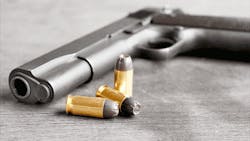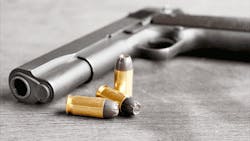In my recent Break Room column, “Broken Glass,” I wrote about a 2007 fatal workplace shooting that occurred in a McDonald’s near my home. McDonald’s employee Robert Joslin was inside the fast food restaurant when his girlfriend’s estranged husband, Nathaniel Williams Jr., walked in and shot and killed him.
After my column appeared in EHS Today magazine, a reader reached out to me with this comment:
“My heart goes out to all victims of violence. I'd carry a firearm with me 24/7 if it was allowed. Without a firearm, my ability to protect myself and coworkers is limited … If Robert Joslin had been carrying a firearm and knew how to use it, he might be here today. If another McDonald's employee was armed, he might have saved Robert's life. I assume people who have firearms know how to safely use them. It's really hard to stop a bad guy who has a gun if you are not armed. Sadly, these incidences don't end until good guys with guns arrive on the scene. The police can't be everywhere all the time. By the time they arrive, damage has usually been done.”
The reader, who asked to be identified only as WRII, continued to share a story that he believes illustrates how guns have the power to diffuse potentially difficult situations:
“Many years ago a young couple was being intimidated by several ‘tough’ guys at a rest area on I-10 in Arizona … A traveler at the rest stop saw the incident unfolding and heard part of the tough-guy talk. Removing his side arm from the trunk of his car, he strapped it on and, though uninvited, joined the group and stood by the young couple. His presence and that of a firearm changed the situation. The tough guys decided to continue on their journey.”
First, I’d like to thank this reader for writing in and sharing his views.
Next, I need to admit that I’m not a “gun person” by any means. I’ve never owned a gun, received training in how to handle one, or even held a real gun. Frankly, I’m not interested in being around guns at all – though I wouldn’t be opposed to taking a lesson or two at a shooting range one day to expand my horizons.
So speaking as someone who admittedly has no gun experience, I often balk at the argument that more guns are what will save us from tragic situations like what happened in that McDonald’s in 2007. Let’s say Joslin did have a gun. He was in McDonald’s to eat and had no idea Williams was coming for him. Once Williams did make an appearance and pull out his gun, would Joslin have had time to react to save himself? Would they have engaged in a full-on shootout, endangering even more people?
I think the sad truth is that these types of shootings often happen so quickly and unexpectedly (not including all the warning signs that could have been addressed before Williams ever stepped in that McDonald’s on that day, of course) that when they occur, we feel completely out of control. Telling ourselves that having another gun present could have solved everything feels safe and convenient – but, unfortunately, I also don’t think it's a realistic strategy in many cases.
In Joslin’s case, he was allegedly being harassed and threatened by Williams prior to that fateful day in McDonald’s. One of the most important lessons I learned during a recent workplace violence workshop is that the warning signs of domestic violence – which too often might play out on work property – could often be addressed before a tragic event occurs.
The issue of whether more guns could keep us safer or put us at even more risk is a complex one. But no matter where you fall on that issue, I think it’s safe to say we could do a lot of good by recognizing and addressing points of conflict before a gun – anyone’s gun – sees the light of day.
About the Author
Laura Walter Blog
Senior Editor
Laura Walter is senior editor of EHS Today, a Penton Media Inc. publication. She is a subject matter expert in EHS compliance and government issues and covers a variety of topics relating to occupational safety and health. Her writing has earned awards from the American Society of Business Publication Editors (ASBPE), the Trade Association Business Publications International (TABPI) and APEX Awards for Publication Excellence.

